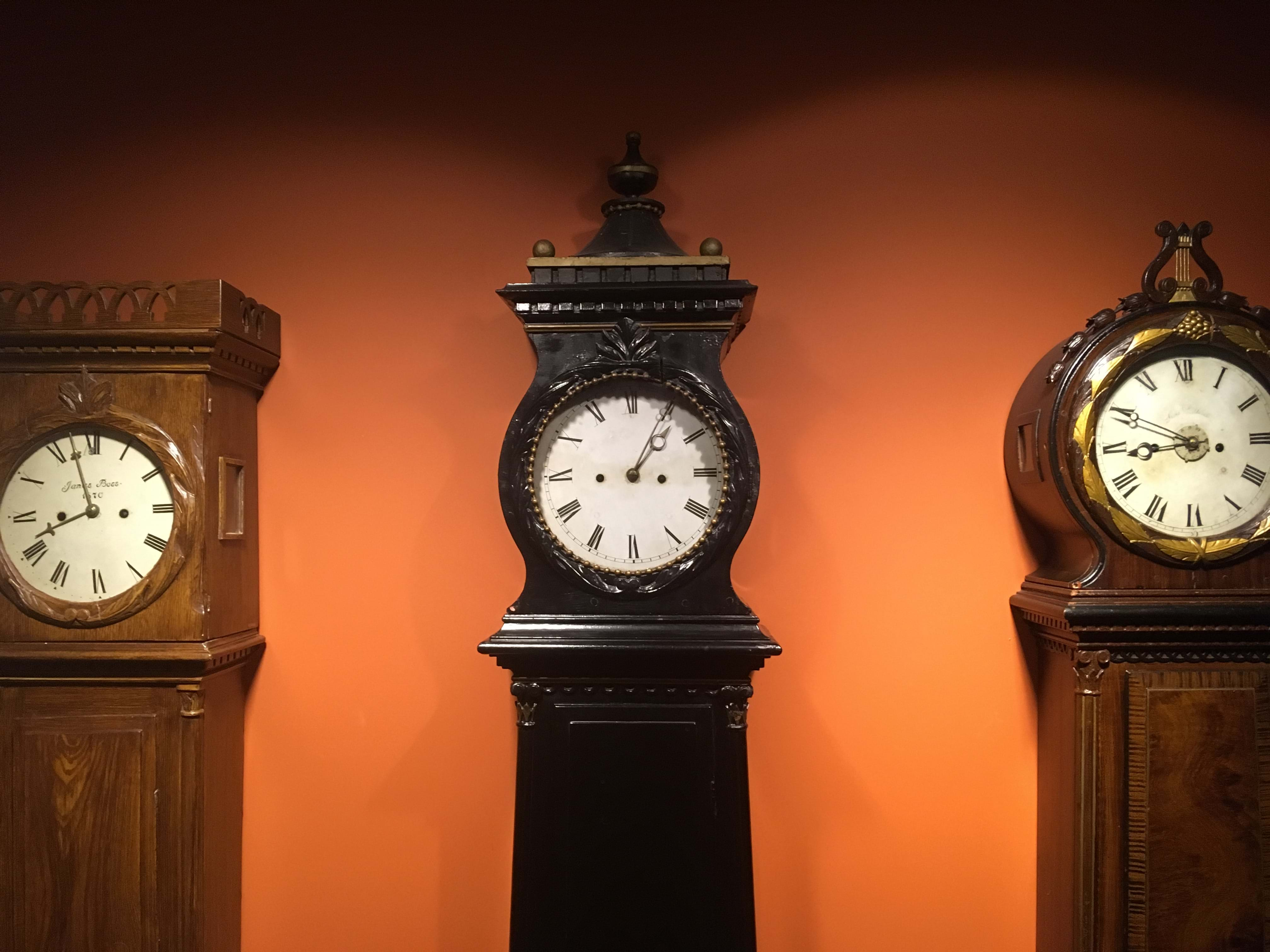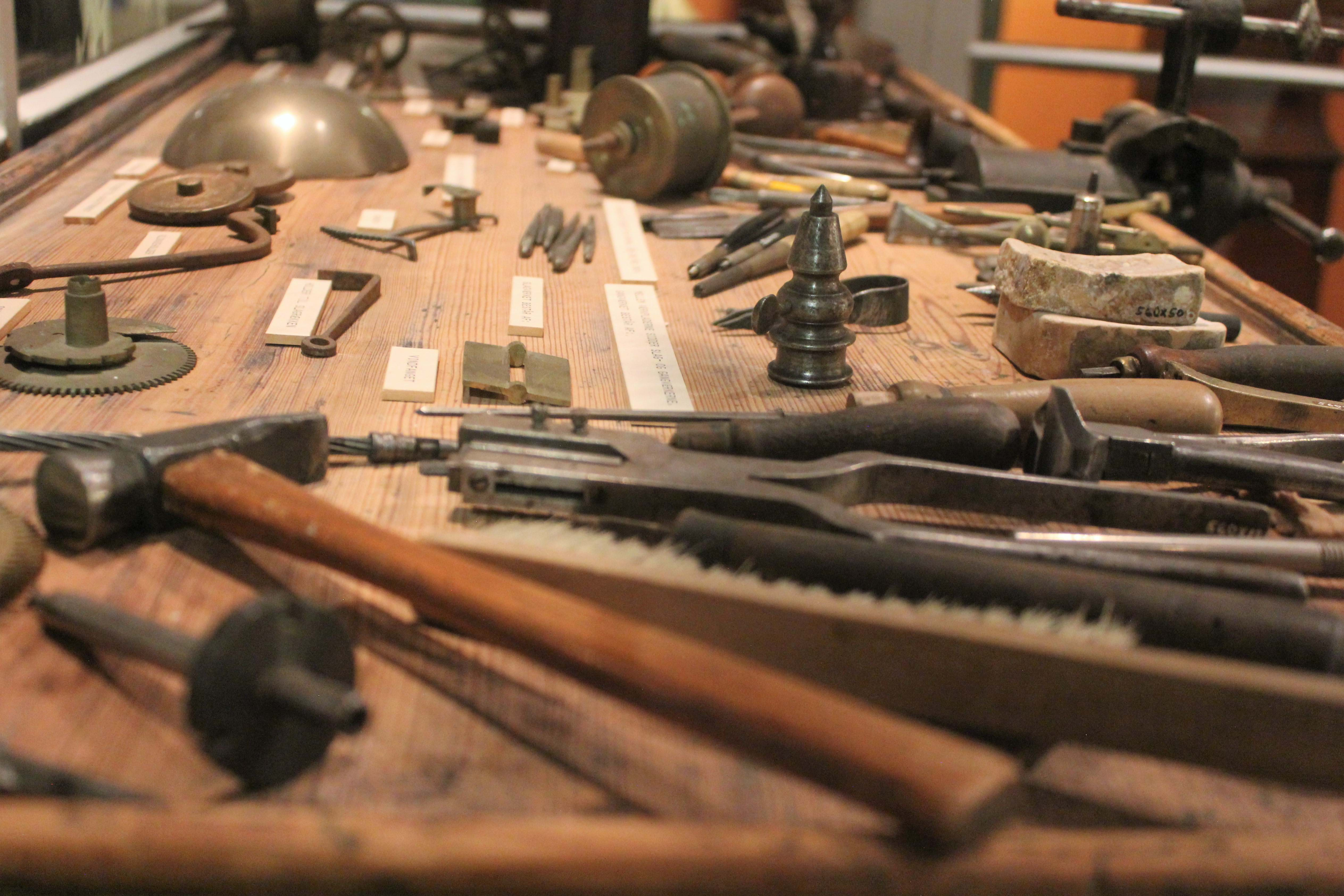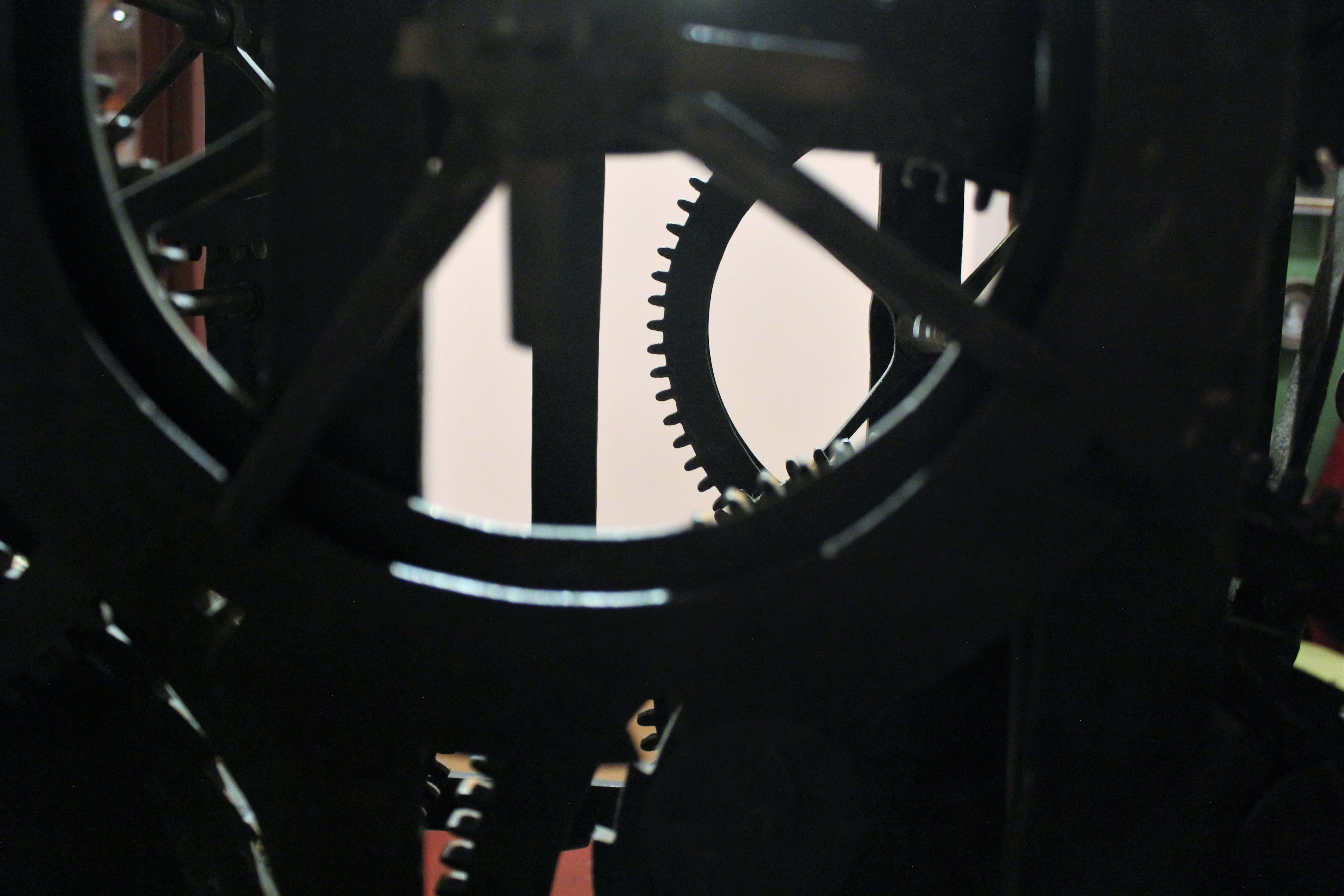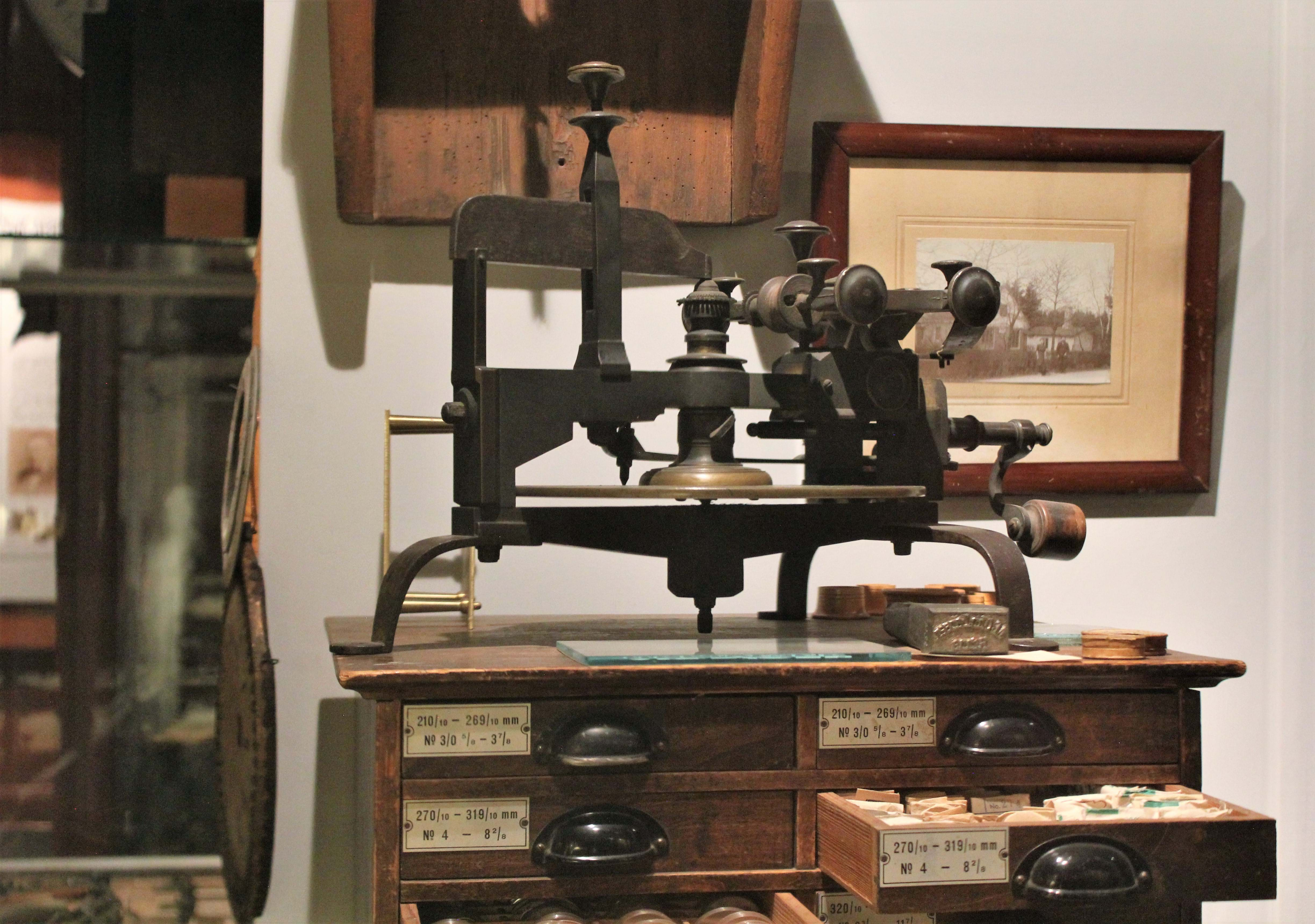GRANDFATHER CLOCKS
A SELECTION OF THE WORLD'S BIGGEST COLLECTION OF GRANDFATHER CLOCKS
The story behind the famous Grandfather Clocks (in Danish: Bornholmerure) begins with a shipwreck.
In 1744 a Dutch ship ran aground between Rønne and Hasle with English grandfather clocks in the cargo.
Local craftsmen, who knew how to tool wood, had the best prerequisites to work with smaller mechanics, and was therefore put on the task to clean and repair the clocks before they were sent to salvage auction.
After working with the Grandfather Clocks, the craftsmen were motivated to manufacture clocks themselves and suddenly a production and export of Clocks from Bornholm were started. The clocks were partially sold to local market towns and farms, and partially exported to the rest of Denmark. Eight craftsmen became the first self-taught watchmakers, among these the two brothers Otto and Peter Arboe are well-known.
Jørgen Peter Arboe, son of Peter Arboe became the most proficient watchmaker of the time. Jørgen established a watchmakers guild, which was known as Rønne Uhrmagerinteressentskab (Rønne Watch partnership) in 1821-1894.
In the late years of 19th century the craftsmen chose to not to adjust their manual production to the new factories.
They wanted to hold on to the traditionally crafted clock and the ideal of high quality and standards. However, the competition against cheap imported fabricated clocks was too hard.
Almost 240 watchmakers was occupied on Bornholm from approx. 1750-1900.
The Museum of Cultural History has the world's biggest collection of Grandfather Clocks, and you can see a big selection of them in our exhibition at Bornholm Museum.




